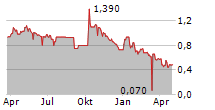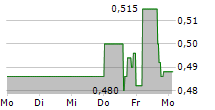
- Overall survival (OS) results from BRACELET-1 corroborate results of previous randomized IND-213 breast cancer study
- Together, these two studies support the compelling potential of pelareorep-based combination therapy to benefit patients with advanced or metastatic HR+/HER2- breast cancer
- Oncolytics Biotech is moving forward to secure funding for a registration-enabling study of pelareorep-based therapy in advanced or metastatic breast cancer
- Over half of BRACELET-1 patients in the pelareorep + chemotherapy arm alive at study end
- Median OS in the pelareorep + chemotherapy arm not reached; median OS at least 32 months (estimated) vs 18 months for the control chemotherapy-only arm
SAN DIEGO and CALGARY, AB, Sept. 19, 2024 /PRNewswire/ -- Oncolytics Biotech® Inc. (NASDAQ: ONCY) (TSX: ONC), a leading clinical-stage company specializing in immunotherapy for oncology, today announced positive clinical results from BRACELET-1, its randomized Phase 2 study evaluating pelareorep in patients with HR+/HER2- advanced or metastatic breast cancer.
Final BRACELET-1 Results
Final BRACELET-1 efficacy data were collected and analyzed two years after the last patient was enrolled as specified by the protocol. Results of the final BRACELET-1 analysis show that the median OS was not reached in the pelareorep + paclitaxel arm, as more than half of the patients in that arm remained alive at study end. In contrast, median OS for the paclitaxel monotherapy arm was 18.2 months, and the hazard ratio was 0.48 for pelareorep + paclitaxel vs. the paclitaxel monotherapy. Had study follow-up continued beyond two years, and patients survived only until the next planned visit (in four months), the median OS for patients in the pelareorep + paclitaxel arm would be 32.1 months. In accordance with these results, the two-year survival rate for patients in the pelareorep + paclitaxel arm was 64% compared to 33% for paclitaxel monotherapy patients. Additionally, the final median progression-free survival (PFS) for BRACELET-1 was 12.1 months in the pelareorep + paclitaxel arm vs. 6.4 months in the paclitaxel monotherapy arm, representing a 5.7-month benefit with a hazard ratio of 0.39.
Confirmed overall response rate (ORR) was 37.5% for pelareorep + paclitaxel and 13.3% for paclitaxel. As previously reported, ORRs at week 16 (the trial's primary endpoint) in the pelareorep + paclitaxel and paclitaxel monotherapy cohorts were 31% and 20%, respectively.
"The fact that the median overall survival was not reached because more than half the patients were still alive at the end of the study is a remarkable achievement for us," said Wayne Pisano, Interim CEO and Chair of Oncolytics' Board of Directors. "It shows just how promising pelareorep treatment can be for extending the lives of breast cancer patients. This is further exemplified by the near doubling of the 2-year survival rate for patients who received pelareorep combination therapy."
Thomas Heineman, M.D., Ph.D., Chief Medical Officer at Oncolytics, commented, "The overall survival and final progression-free survival results from the BRACELET-1 final analysis exceeded our expectations. In addition, our translational data strongly suggest that the OS benefit was linked to pelareorep's immunologic activity. Taken together, the BRACELET-1 results provide compelling support for the potential of pelareorep-based combination therapy to benefit patients with advanced or metastatic HR+/HER2- breast cancer. Moreover, these results substantiate the statistically significant near doubling of median overall survival observed in the earlier randomized IND-213 study in a similar patient population treated with pelareorep + chemotherapy compared to chemotherapy alone. Having recently discussed with the FDA key design elements for our next breast cancer study, in combination with the strong survival data from the BRACELET-1 and IND-213 studies, we are confident in our plan to conduct a registration-enabling study to assess pelareorep-based combination therapy in patients with advanced HR+/HER2- breast cancer."
Professor Martine J. Piccart, M.D., Ph.D. Université Libre de Bruxelles commented, "While there has been progress in the treatment of advanced and metastatic breast cancer, an unmet medical need remains. With the encouraging results of BRACELET-1 and the prior positive results of the IND-213 study, pelareorep should continue to be developed and evaluated in the clinical setting."
Final BRACELET-1 Results:
Paclitaxel (PTX) | PTX + Pelareorep | PTX + Pelareorep + | |
Confirmed ORR Over Course of Trial | 2 (13.3 %) | 6 (37.5 %) | 3 (17.6 %) |
Median PFS (months) | 6.4 (95% CI: 3.7, NR) | 12.1 (95% CI: 6.6, 15.9) | 6.4 (95% CI: 4.0, 7.5) |
PFS Hazard Ratio vs. PTX Monotherapy | - | 0.39 (95% CI: 0.12, 1.24) | 1.43 (95% CI: 0.49, 4.12) |
Median OS (months) | 18.2 | Not Reached | 21.7 |
Estimate: 32.11 | |||
OS Hazard Ratio vs. PTX Monotherapy | - | 0.48 (95% CI: 0.17, 1.35) | 1.08 (95% CI: 0.45, 2.57) |
24-month OS Rate | 33 % | 64 % | 39 % |
Notes:
CI: Confidence interval; NR: Not reached. | |||
Christophe Degois, VP of Business Development for Oncolytics commented, "With the evolving breast cancer treatment paradigm and the introduction of antibody-drug conjugate therapies, pelareorep has the potential to provide an important alternative for patients considering chemotherapy as their next treatment option. Upon thorough analysis of the HR+/HER2- metastatic breast treatment cancer landscape, we believe that pelareorep could have a substantial impact on around 55,000 patients in the US, representing a significant commercial opportunity."
About BRACELET-1
The BRACELET-1 (BReast cAnCEr with the Oncolytic Reovirus PeLareorEp in CombinaTion with anti-PD-L1 and Paclitaxel) study is an open-label, phase 2, randomized study in patients with HR+/HER2-, endocrine-refractory metastatic breast cancer. The study randomized 45 patients 1:1:1 into three cohorts. A three-patient safety run-in was also conducted with patients receiving pelareorep, paclitaxel, and avelumab prior to randomization. The three cohorts are treated as follows:
- Cohort 1: paclitaxel
- Cohort 2: paclitaxel + pelareorep
- Cohort 3: paclitaxel + pelareorep + avelumab (Bavencio®)
Patients in cohort 1 receive paclitaxel on days 1, 8, and 15 of a 28-day cycle. Patients in cohort 2 receive the same paclitaxel regimen as cohort 1, plus pelareorep on days 1, 2, 8, 9, 15 and 16 of the 28-day cycle. Patients in cohort 3 receive the same combination and dosing regimen as cohort 2, plus avelumab on days 3 and 17 of the 28-day cycle. The primary endpoint of the study is overall response rate at week 16. Exploratory endpoints include progression-free survival, peripheral and tumor T cell clonality, inflammatory markers, and safety and tolerability assessments. Additional data from BRACELET-1 and information on the breast cancer program can be found by clicking here.
About Oncolytics Biotech Inc.
Oncolytics is a clinical-stage biotechnology company developing pelareorep, an intravenously delivered immunotherapeutic agent. Pelareorep has demonstrated promising results in two randomized Phase 2 studies in metastatic breast cancer and Phase 1 and 2 studies in pancreatic cancer. It acts by inducing anti-cancer immune responses and promotes an inflamed tumor phenotype -- turning "cold" tumors "hot" -- through innate and adaptive immune responses to treat a variety of cancers.
Pelareorep has demonstrated synergies with multiple approved oncology treatments. Oncolytics is currently conducting and planning combination clinical trials with pelareorep in solid malignancies as it advances towards registrational studies in metastatic breast cancer and pancreatic cancer, both of which have received Fast Track designation from the FDA. For further information, please visit: www.oncolyticsbiotech.com or follow the company on social media on LinkedIn and on X @oncolytics.
This press release contains forward-looking statements, within the meaning of Section 21E of the Securities Exchange Act of 1934, as amended and forward-looking information under applicable Canadian securities laws (such forward-looking statements and forward-looking information are collectively referred to herein as "forward-looking statements"). Forward-looking statements contained in this press release include statements regarding Oncolytics' belief as to the potential, mechanism of action and benefits of pelareorep as a cancer therapeutic; our confidence in our plan to conduct a registration-enabling study to assess pelareorep-based combination therapy in patients with advanced HR+/HER2- breast cancer; the potential market and commercial opportunities for pelareorep; our belief that pelareorep is poised to advance to registration-enabling studies for the treatment of breast and pancreatic cancers; and other statements related to anticipated developments in Oncolytics' business and technologies. In any forward-looking statement in which Oncolytics expresses an expectation or belief as to future results, such expectations or beliefs are expressed in good faith and are believed to have a reasonable basis, but there can be no assurance that the statement or expectation or belief will be achieved. Such forward-looking statements involve known and unknown risks and uncertainties, which could cause Oncolytics' actual results to differ materially from those in the forward-looking statements. Such risks and uncertainties include, among others, the availability of funds and resources to pursue research and development projects, the efficacy of pelareorep as a cancer treatment, the success and timely completion of clinical studies and trials, Oncolytics' ability to successfully commercialize pelareorep, uncertainties related to the research and development of pharmaceuticals, uncertainties related to the regulatory process and general changes to the economic environment. In particular, we may be impacted by business interruptions resulting from COVID-19 coronavirus, including operating, manufacturing supply chain, clinical trial and project development delays and disruptions, labour shortages, travel and shipping disruption, and shutdowns (including as a result of government regulation and prevention measures). It is unknown whether and how Oncolytics may be affected if the COVID-19 pandemic persists for an extended period of time. We may incur expenses or delays relating to such events outside of our control, which could have a material adverse impact on our business, operating results and financial condition. Investors should consult Oncolytics' quarterly and annual filings with the Canadian and U.S. securities commissions for additional information on risks and uncertainties relating to the forward-looking statements. Investors are cautioned against placing undue reliance on forward-looking statements. The Company does not undertake any obligation to update these forward-looking statements, except as required by applicable laws.
Company contact:
Jon Patton
Director of IR & Communication
[email protected]
Investor Relations for Oncolytics:
Timothy McCarthy
LifeSci Advisors
+1-917-679-9282
[email protected]
Logo - https://mma.prnewswire.com/media/1762876/Oncolytics_Biotech_New_Logo.jpg
SOURCE Oncolytics Biotech® Inc.





